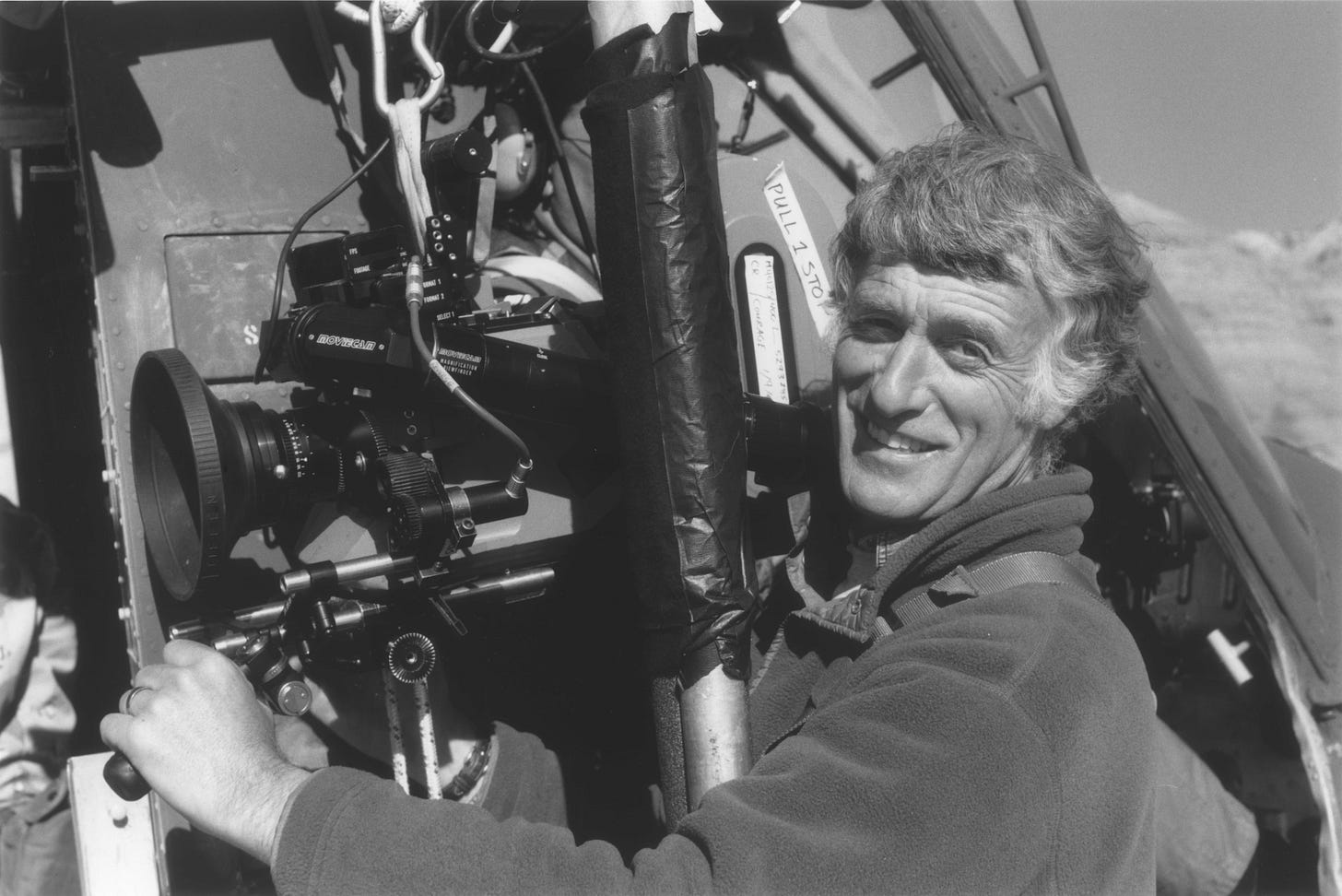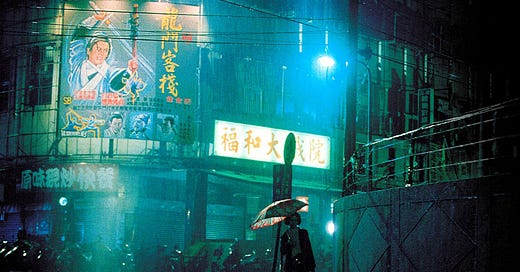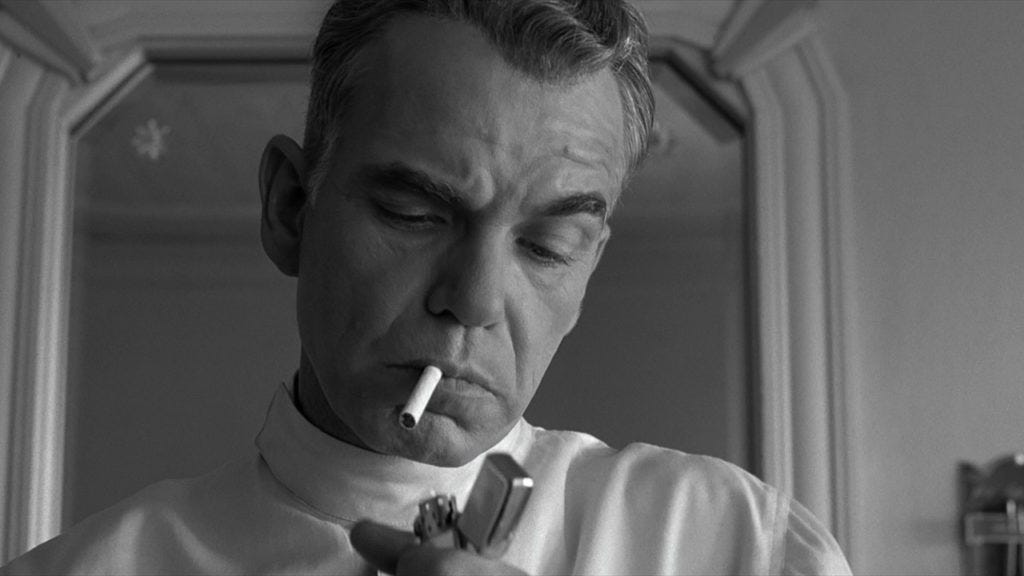
Here are introductions to three longer pieces I’ve written and links to them, starting with the October print issue of Newcity, with a 5,000-word conversation with Roger Deakins about his half-century of taking stills; a survey from last year at the onset of the wave of repertory programming across the country, from the perspective of Chicago; and a 1,600-word reminiscence from 2022 of the 1990s heyday of the Chicago screening room, starring Gene Siskel and Roger Ebert but mostly Gene Siskel: it was a toxic workplace.
Tell me how images come back to story. I may write too much when I review things in both photography and movies about these incidents of beauty. How do the pursuits inform each other? Does a lifetime of experience and parallel work with shooting your own stills photography? Do you just instantly go to yourself, this is good and then Sam or Joel or Ethan says, yes, put a forty-five on it or something like that?
I don’t often discuss lenses with people, actually, with directors. And not with Joel, it’s been very rare. A couple of times on Barton Fink… That’s because I tend to shoot slightly longer than they were used to shooting with [their first director of photography] Barry [Sonnenfeld]. They would be shooting on an eighteen or twenty-one, and I would want to be shooting on a twenty-seven, maybe a thirty-two. I know we had a few conversations but I don’t know if I convinced them. They’re not especially long lenses, but it’s slightly longer than the extreme wide angles [they were using that] I’m not a fan of. Then my stills photography, I never use extremely wide lenses, either. But it always is about the story first.
The last thing you want to do is make something pretty for the sake of it.
Yeah, exactly. I mean, I can see a pretty image when I’m taking still photographs, but if it hasn’t got any story within it, you know, even if it’s a story of a tree that’s been blown by the prevailing wind, you know, there’s the shot I took. I mean I didn’t take it because it’s a beautiful image. I hope it is a beautiful image, but I took it because it was the story of the tree. And I do love images where, say, with de Chirico, you are juxtaposing, like he does the bridge with a little girl with a hoop and the shadows. I’m always trying to find those connections between elements within a frame, which is basically storytelling, ’cause I’m still a photographer. If it has anything, it implies a whole world behind it. You obviously can’t express it all in one frame. Certain photographs I’ve taken that I really like, you know, there’s a woman holding an umbrella at a bus stop and she’s looking over and there’s a sign, an advert next to her, with a naked, young woman lying in the sunlight somewhere on a boardwalk in California or wherever. And that’s a whole story in there because, who is the woman, the older woman, what is she thinking when she’s looking at this poster and it’s raining and it’s at the seaside, you know, what’s she doing? I was at the same seaside town the other day. It’s a pity the bus stop doesn’t exist anymore, I could never get that shot now, but so I’ve got it. [Continues here.]
I was never afraid. But the caustic bald man wanted to be feared.
I was never afraid of him; only slightly startled, sometimes amused, mostly bemused. From the first confrontation when I had just started college. He was always… concerned. And he knew best.
Boy, did Gene Siskel know best, and better than any of you.
Gene used to talk in Mamet-like cadences when he was bullshitting and berating, at least to those he considered his lessers, when cloistered in Chicago’s private screening room, first in River North and which is now in a successive incarnation atop a Loop high-rise. Sometimes the hectoring spilled onto State Street or Lake Street.
You get a taste of his proud opprobrium in the David Letterman clips that have resurfaced alongside a raft of excerpts from the television shows (and the-not-quite-mock-feud) that he shared with Roger Ebert. [Continues here.]
Around the turn of the century—around the time that multiplex movie theaters converted to video projection and jettisoned 35mm film projectors as part of an economic scheme that consolidated exhibition in the hands of a few banks, real estate concerns, tech vendors and venture capitalists—some old hands shook their heads and said these economics don’t make sense, one day, one day movies will be like the Grand Opera. It’s gonna be special, it’s gonna be an event, not taking up an impulse just to see whatever’s showing. Still, those prognosticators thought that the enshrinement of a previous century’s filmmaking would be side-by-side with a lasting, feasible, vital theater industry.
Cut to a couple of decades into the century, a few years into the ongoing pandemic, and for forward-thinking, backward-gazing movie houses, and the newest success is older movies. In at least a modest way, “revival houses,” or “calendar houses,” “rep,” or “repertory houses” as they were called in the days of double bills—before the ready availability of many movies from all sorts of genres, first on video and now on streaming—are back. [Continues here.]





